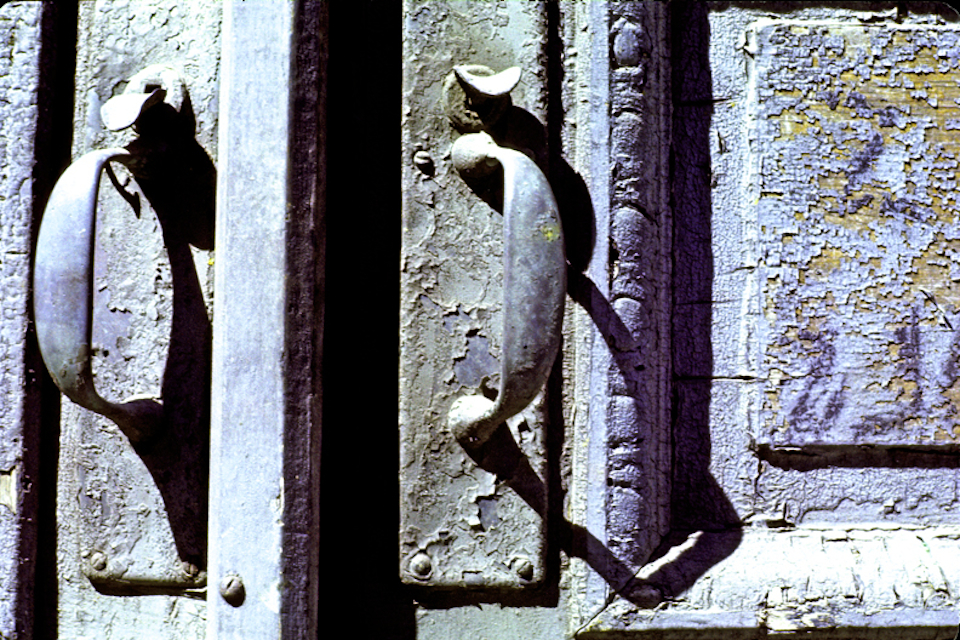
Louis Nardo (1946-2009) possessed an artist’s soul, a painter’s vision and a craftsman’s hands. He was exceptionally skilled at painting, woodworking, ceramics, graphics and 3-D animation. Perhaps nowhere, however, is the entirety of his skill and spirit better captured and expressed than in his photography.
The series of photos presented on POBA show Nardo’s reverence for the thing itself (“eo ipso”) – the simple objects of day-to-day life that under his eye and camera are captured with astonishing brilliance, relief, and vividness. These photos for the most part represent close-ups of architectural features in his Tribeca neighborhood, an older part of lower Manhattan. We see a fresh padlock on an old iron gate, a set of door handles on a flaking painted door, revealing the layers of Tribecan’s tastes and styles over the years, fire hoses waiting quietly for the next alarm. These are the details one misses in the rush of daily life. But Nardo did not miss them; he elevated them to reveal the unrecognized beauty in front of our eyes, invisible but for the looking more closely, but for the pause in our path that allows us to see what he saw.
Nardo was born in 1946 in Erie PA. In 1968, he received a BFA from the Columbus College of Art and Design where he studied both fine art and graphic design. He served 3 years in the US Army, in charge of the Fort Hood Special Services Art Department, returning to Columbus College to get an additional degree in advertising and design. He quickly became the Art Director of Michael Abelson, an ad agency in New York City, leaving it to create his own company, Nardo and Associates, which he ran successfully for 20 years. There he created graphic designs and logos for clients including major corporations such as Best Foods, Benjamin Moore Paints, Jaguar-Rover Triumph and Conde Naste Publications. Following a brief stint in newspaper advertising, he returned to graphic work, including 3-D animation.
Nardo was the recipient of numerous awards for his paintings and silk screen prints and was shown at galleries and exhibits including Greenwich Village Art Show, NY; Art in the Park, Paterson, NJ; Gallery 52, South Orange, NJ; P&M Larisey Gallery, NY; Villages Studio Exhibition, Hackensack, NJ; Terrain Gallery, NY; Saatchi & Saatchi DFS Reception and art show; Space IIXI, Tribeca, NY and the Texas Arts and Crafts Festival, to name a few. His most significant piece of animation was for the world famous Millenial New Year’s Eve celebration (in 2000) in Times Square, NY, the iconic, globally broadcast celebration of the 21st century. He retired in 2002.
Nardo’s artistic aesthetic was early and often inspired by architectural subject matter and typically had a strong graphic aspect. His paintings were similarly inspired by architectural subject matter initially captured in his photographs, which he then abstracted and transformed into large canvases. His fine arts oeuvre is broad, comprised of paintings, prints, drawings, photographs, and ceramics. Louis also worked collaboratively with his wife, Joan Sacks, a renowned architect in her own right, on a series of pastel drawings and fine art prints. Before passing away in 2009 in New York City, he quoted J.M. Barrie’s most famous work – and perhaps his most enjoyed fictional character: “To die will be an awfully big adventure,” says Peter Pan.

